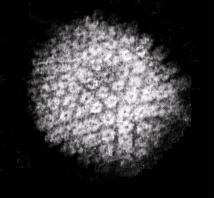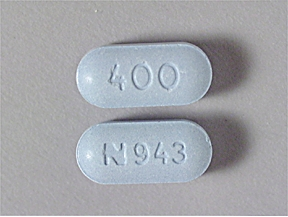Let’s Talk!
It is a sexually transmitted infection (STI) that people rarely talk about but are often aware of. The cold sore is one of its common presentations, although many do not use the true medical term to identify this skin lesion.
According to American MD Andrew C. Kradowski, it is estimated that herpes currently affects 60% to 95% of adults worldwide. Based on CureResearch.com data, in the United States alone, 1 in 4 or about 25% of the population is infected with genital herpes.
Canadian statistics about the prevalence of herpes are not readily available because it is not legally required for health centers to report such data to government agencies. However, extrapolations of statistics estimate that about 8 million or 1 in 4 Canadians presently have genital herpes.
Microscopy Image of a Herpes Simp lex Virus (Left) The term “herpes” originates from Ancient Greek and means “creeping”. The herpes simplex virus has been known for at least 2,000 years and was very common around 14 AD in Rome. Prostitutes were often infected with this virus, so much so that in the 18th century, it was labeled “a vocational disease of women”.
lex Virus (Left) The term “herpes” originates from Ancient Greek and means “creeping”. The herpes simplex virus has been known for at least 2,000 years and was very common around 14 AD in Rome. Prostitutes were often infected with this virus, so much so that in the 18th century, it was labeled “a vocational disease of women”.
The two most common types of the herpes simplex virus are type 1 (HSV-1) and type 2 (HSV-2) based on the site of infection (see picture below). Type 1 is the most prevalent and infects the mouth and face area. The visible blisters that it produces are often referred to as “cold sores” or “fever blisters”.
Type 2 usually attacks the genitals, and visible blisters often appear after a person is infected. It is important to note that type 1 and 2 can infect both the mouth/face and the genitals during unprotected oral sex.
When an infected person has sex with an uninfected partner, skin to skin contact is the typical means of transmission of herpes. Tiny breaks in the skin or mucous membranes in the mouth or genitals allow an entry point for the virus.
The viruses enter the body via the sensory nerves to the sensory nerve cell bodies and lodge in the ganglion. There, the viruses become “latent” or dormant and stay there for a lifetime. During a herpes outbreak, only a portion of these viruses become active, which is why herpes is considered an incurable STI.
Herpes typically presents itself with periods of active disease that last between 2 to 21 days with periods of remission; most people have an average of 4 to 5 outbreaks per year. Over a period of several years, an infected person often has fewer and less intense herpes outbreaks.
 Early Cold Sores or “Fever Blisters” (Right) Triggers of a herpes outbreak are often linked to a weakened or immature immune system such as when someone is very stressed, has AIDS, is a transplant recipient, or is taking drugs for cancer. The very young and the elderly are particularly vulnerable when infected with the herpes virus.
Early Cold Sores or “Fever Blisters” (Right) Triggers of a herpes outbreak are often linked to a weakened or immature immune system such as when someone is very stressed, has AIDS, is a transplant recipient, or is taking drugs for cancer. The very young and the elderly are particularly vulnerable when infected with the herpes virus.
A mother has a 30% to 60% risk of transmitting herpes to her newborn baby if her first outbreak is during labour. However, the risk falls to 3% if it is a reoccurring outbreak and to 1% if she is not exhibiting symptoms. Because babies have immature immune systems, HSV causes unusual clean linear erosions in the skin creases.
A few days before a herpes outbreak, most infected individuals feel a tingling and burning sensation in the skin area where the blisters will appear. Then, blisters containing very infectious virus particles appear on the skin. These round clustered blisters vary in size and number and have a red area around them. After a few days, the cold sores will scab, dry up, and disappear.
The herpes virus is easily transmitted by direct contact with lesions or bodily fluids of an infected person. However, genital herpes (HSV-2) are often asymptomatic or what is termed “subclinical herpes”. Even during periods of remission, an infected individual can transmit the virus to an uninfected sexual partner through microscopic virus shedding. According to American MD Peter E. Leone, this shedding can occur 1 week before or after a visible outbreak. Also, shedding is most common during the first year after being infected.
Unless someone has visible sores, it is difficult to diagnose herpes. A blood test is often required to identify antibodies to the virus and confirm that a person is indeed infected. The new Immunodot glycoprotein G-specific herpes test is 98% specific in determining if someone is infected with HSV-1 or HSV-2.
 Close-up of Early Lesions (Left) Being infected with oral or genital HSV-1 prevents a person from being infected with the same virus in another body part. This primary infection causes the body to produce antibodies to the virus. It takes about 6 weeks after the initial infection for the antibodies to provide such protection. Also, being infected with HSV-1 helps reduce the severity of an HSV-2 infection if a person contracts this type of virus.
Close-up of Early Lesions (Left) Being infected with oral or genital HSV-1 prevents a person from being infected with the same virus in another body part. This primary infection causes the body to produce antibodies to the virus. It takes about 6 weeks after the initial infection for the antibodies to provide such protection. Also, being infected with HSV-1 helps reduce the severity of an HSV-2 infection if a person contracts this type of virus.
As with most STIs, women are more vulnerable (odds 8-11%) than men (odds 4-5%) in contracting herpes on a yearly basis without using any type of protection or antiviral medication. One explanation for this difference between the sexes in infection rates is due to the larger mucosal skin area in women’s genitals. In fact, American MD Gregory J. Mertz found that the risk of transmission of the virus from a male partner to a female one in a monogamous relationship is 30% per year.
The consistent use of a barrier method such as male condoms is used to reduce the risk of transmitting herpes by about 30%. The female condom gives the advantage of covering the labia and therefore offers a greater area of protection. The use of dental dams during oral sex is also recommended to reduce the risks of spreading herpes. However, since the herpes virus can reside in the whole pubic and anal areas, both types of condoms only offer limited protection.
Cold sores are usually treated with oral medications for one day, and the blisters become non-contagious after the 3rd day. Over-the-counter topical medication such as acyclovir, penciclovir, and docosanol can be applied to genital herpes. Analgesics such as ibuprofen and acetaminophen can help reduce fever and pain often associated with a herpes outbreak; topical anesthetic such as prilocaine, lidocaine, benzocaine, or tetracaine can relieve the pain and itchiness of herpes lesions.
The effect of using a condom and antiviral medication (i.e., acyclovir, vlaciclovir, famciclovir, and penciclovir) may be cumulative, as it is estimated that they reduce by 75% the spread of herpes to an uninfected partner.
Although most people are aware of the existence of the herpes virus, this topic makes most people uncomfortable. There is a strong stigma attached to genital herpes in particular, as it is often associated with promiscuity or questionable health habits. The fact is, a person can be infected with this virus the very first time s/he is sexually active – especially if no barrier methods are used.
It is important to understand the method of transmission of HSV-1 and HSV-2, the population most at risk of contracting this STI, how best to protect ourselves from getting infected and how to treat this viral infection. With an estimated 536 million people worldwide infected by the herpes simplex virus, it is unlikely that this virus will be eradicated in the near future. Herpes is a life-long disease, therefore the best way to limit the spread of this infection is still prevention.
Literary Truths
Here are some interesting facts about herpes:
- Certain individuals who have a rare gene variation (APOE-epsilon4 allele carriers) are very vulnerable to HSV-1 and have a higher incidence of Alzheimer’s disease.
- Although herpes zoster (or shingles) is in the same herpesviridae family as HSV, they are different. Herpes zoster is caused by the reactivation of the dormant varicella-zoster virus, not the herpes simplex virus.
- Canker sores are not herpes lesions. Canker sores are found only inside in the mucosal tissue of the mouth. Although they are very painful, they are not contagious. This kind of sore has a grey or tan area with a bright red rim right around it. They disappear after a couple of days and are easily treated with topical antibiotics.
- Based on the research done by American MD Bruce Soloway, suppressive therapy with high doses of antiviral agents (acyclovir or valacyclovir) does not fully prevent asymptomatic transmission of HSV-2.
- A promising vaccine against HSV-1 is being developed at the University of Florida. This vaccine targets and cleaves the mRNA of essential genes in HSV-1.
References
CureResearch – Statistics by Country for Genital Herpes
Dell’Aniello, Sophie, et al. “Risk of herpes zoster in patients prescribed inhaled corticosteroids: a cohort study.” BMC Pulmonary Medicine 11 (2011): 59.
The Difference Between Canker Sores and Herpes
Leon, Peter E. “Reducing the risk of transmitting genital herpes: advances in understanding and therapy” Curr Med Res Opin. 2005 Oct;21(10):1577-82.
Soloway, Bruce. “High-Dose Antivirals Do Not Fully Suppress Reactivation of Genital Herpes Simplex.” Journal Watch General Medicine (2012).
Susman, Jeffrey L. “Delayed herpes diagnosis leads to lifelong consequences.” Journal of Family Practice Feb. 2012: 120.

Hi! I just love the images you put in here. They fit so well with what you’re trying to say. I’m sure you’ll reach so many people with what you’ve got to say. Good luck!
Thanks and good blog.
Herpes: Beyond Cold Sores Sexual Health Site was a good read, I certainly intend to come back again and read your future posts.
Lovely blog! I’m loving it!! Will come back again. I am taking your feeds also.
Hi! I’m at work browsing your blog from my new iphone 3gs! I love reading through your blog and look forward to all your posts! Carry on the superb work!
This is some great info and was well worth the read. I hope to read more stuff from you in the future that is as well written as this post.